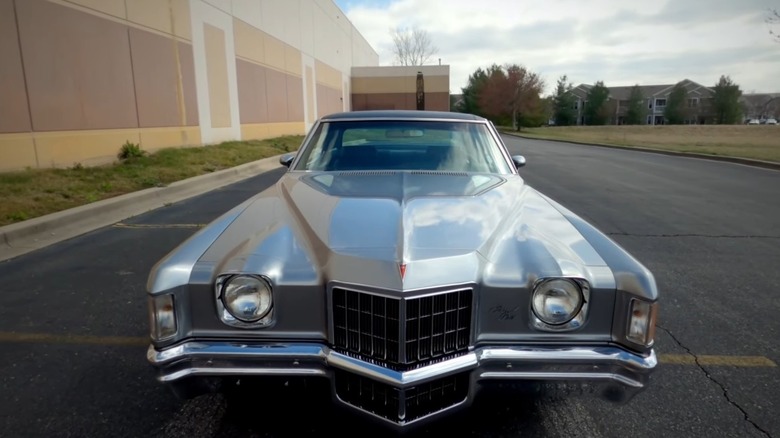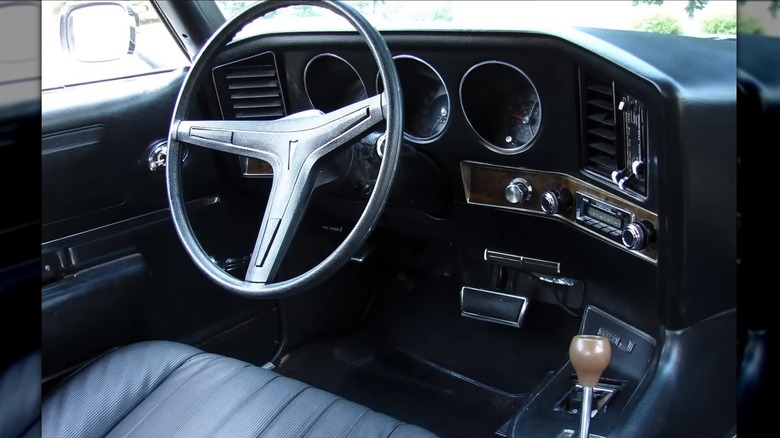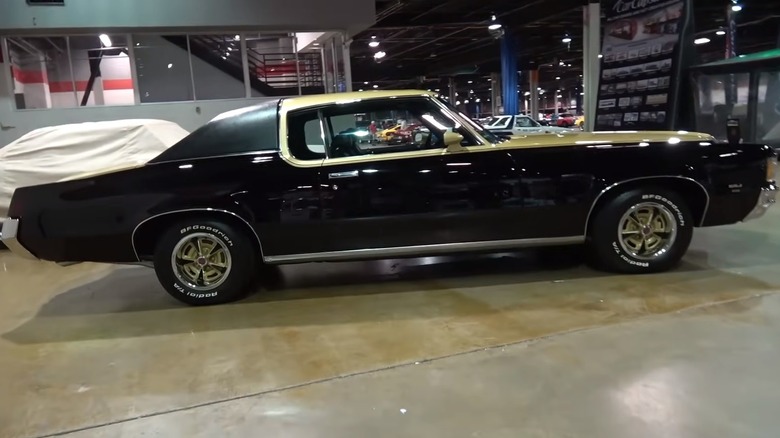All About The 1972 Pontiac Grand Prix
Pontiac delivered some stellar performance vehicles in the '60s, including the GTO and the Firebird. However, these models catered to a younger crowd probably more concerned with style than with premium luxury features. So, where did those more mature drivers with the financial means and taste for fancy extras turn? For the discerning buyer, the Pontiac Grand Prix was the sophisticated alternative.
The Grand Prix is considered by many to be one of the most underappreciated Pontiac muscle cars. Pontiac launched the Grand Prix in 1962, and it spanned seven generations before its last model was released in 2008. One of the most iconic iterations was the second generation, which includes the 1972 model. Due to an automotive workers strike, it wasn't possible to implement some of the planned changes for this generation, and a couple different models ended up being very similar to the previous year's release. Regardless, several aspects of the 1969-1972 Grand Prix models stand out, such as an innovative driver-centric design, trims that referenced Duesenberg, and the option to buy the rare 1972 Hurst SSJ that came in black.
The 1972 Pontiac Grand Prix had a driver-centric cockpit
Prior to the 1969 Grand Prix model, an interior with a driver-centric layout was something that was pretty much foreign to American vehicles. Instead of a flat dash that had components like the radio dials and climate control knobs facing straight back, the dashboard and center console wrapped around the driver more like an aircraft cockpit. This luxurious change to the interior dashboard was modeled after brands like Cadillac and Packard, all while maintaining the high performance of newer Pontiac models.
This driver-centric design is partly what helped make these models become one of the coolest looking Pontiac models ever made, and it's seen widely today in new vehicles. This "cockpit" setup offers a more ergonomic experience with all the vehicle's major controls within easy reach of the driver. It has a way of making the car's operator feel like they are really in charge of the vehicle. Plus, it's also potentially safer, as the driver can see the controls in their peripheral vision without glancing away from the road.
Duesenberg and Hurst influence on the Pontiac Grand Prix
When the second-generation Grand Prix debuted, it featured multiple trim levels denoted by letters. There was the "J," and the "SJ," which some say was intended to pay tribute to the Duesenberg "Model J" cars. This was reportedly the idea of John DeLorean, who headed up the development of some of Pontiac's greatest successes, like the Tempest GTO and the Grand Prix. DeLorean not only knew automobiles, but he was also adept at marketing and skirting GM's policies to push the boundaries of car design. Many automotive aficionados consider the Duesenberg Motors Company, dating back to the 1920s and '30s, to have produced some of the most posh and stylish vehicles ever made. DeLorean, aiming to reel in luxury buyers who also wanted a good performance from the Grand Prix, thought a callback to Duesenberg would be advantageous.
One of the Grand Prix's rarest and most sought-after versions is the 1972 Hurst SSJ in black. These models include the "Hurst" badging, named after another inventor who contributed to the Grand Prix family, George Hurst. It also contains the 400 cubic-inch V8 engine that you could upgrade to 455 cubic inches and an extremely limited-edition black and gold paint job. Overall, Pontiac produced just over 91,000 of these cars in 1972, with a small fraction of those being the special-edition Hurst SSJ.


